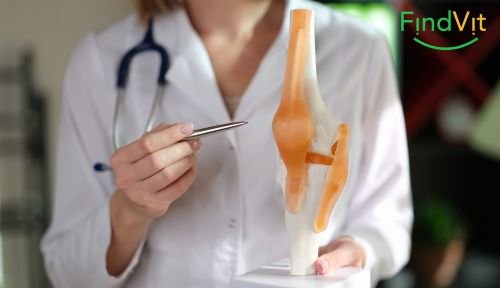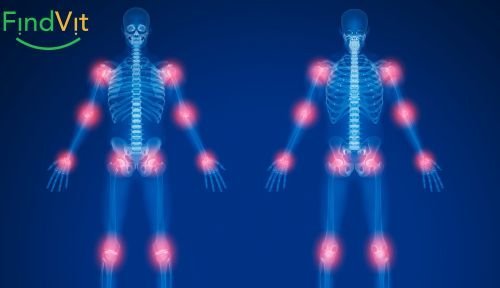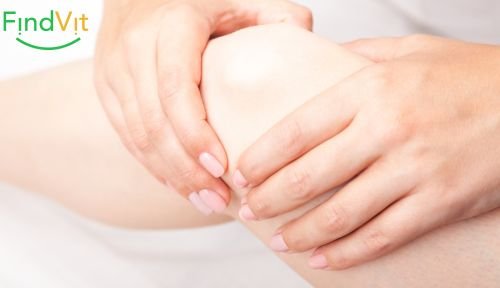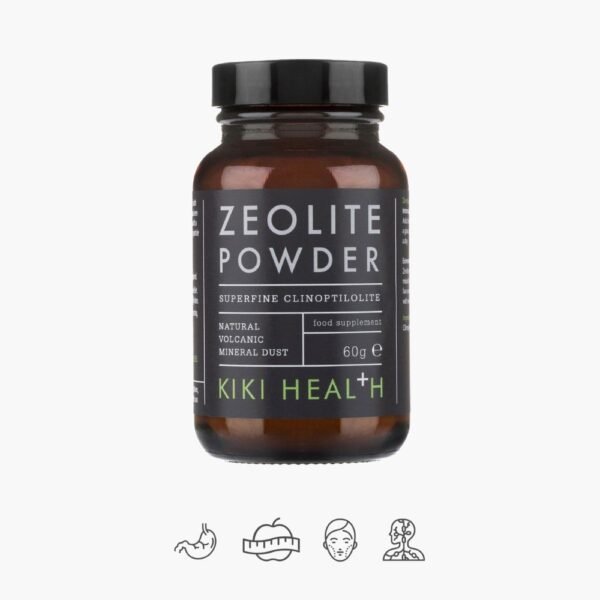Inflammation of the knee joint is a serious and quite common condition that can make daily activities difficult and reduce the quality of life. Despite the fact that joint inflammation is a common problem, many people are not sufficiently informed about its symptoms, causes and possible treatment strategies. Joint health is vital for every person, as the condition of the joints directly affects freedom of movement and general well-being. Therefore, it is important to understand how to reduce joint inflammation and pain, as well as how to prevent the condition from worsening.1
This article will examine the causes, symptoms, diagnosis methods and treatment options for inflammation of the knee joint and other joint inflammations. We will look at various treatment strategies, from heating and cooling the joint to pharmacological and surgical interventions. In addition, we will discuss beneficial joint supplements and preventative measures to help prevent or reduce the symptoms of joint inflammation. This information will be useful both for those who are already dealing with joint inflammation, and for those who want to take care of their joint health and maintain a good quality of movement.

What is a joint and its inflammation?
A joint is a complex connection between two or more bones that allows us to perform various movements. Each joint consists of cartilage, a connective tissue that covers the articular ends of bones and reduces the impact of impact on the joint. Also an important part is the joint capsule, which surrounds the ends of the bones. This capsule produces and fills the entire joint cavity with a continuous joint lubricant that lubricates the surfaces so that the movement mechanism works flawlessly. The ends of the bones that make up the joint are connected and held in a specific position by ligaments.
Arthritis, also known as arthritis, can occur in one or more joints. This inflammation negatively affects a person's ability to work and quality of life, so it is important to contact specialists at the first symptoms. There are over a hundred forms of arthritis, the most common of which are osteoarthritis, rheumatoid arthritis, and psoriatic arthritis. If the disease affects one joint, then the arthritis is called monoarthritis, and if the inflammation covers several joints, it is called polyarthritis.
Arthritis can be acute or chronic. In cases of acute inflammation, it begins suddenly, the pain is immediately strong, while chronic inflammation develops gradually, often the pain intensifies. Inflammation of the joint can be suspected if the joint swells, there is pain (in most cases, the pain is constant in the entire joint area), the joint is swollen, which turns into pain when moving, the joint is often hot, the skin may turn red, pain and swelling limit certain movements of the joint, less mobility of the joint, a change in the shape of the joint.
Joint pain is the main symptom of joint diseases, which can be acute or chronic. It can occur for a variety of reasons, including acute trauma, degenerative joint disease, or joint inflammation (arthritis), usually caused by infection, a metabolic disorder, or an autoimmune process. Arthritis is one of the most common causes of joint pain, and the two main forms of arthritis are osteoarthritis and rheumatoid arthritis. Osteoarthritis is a degenerative disease that causes the cartilage surrounding the joint to break down easily, while rheumatoid arthritis is an autoimmune disease that causes joint inflammation.

Interesting facts about joints
Joints, made up of complex structures, are essential for human movement. In this section, we will discuss various features and facts about joints.
Food products that improve the condition of the joints
Nutrition plays an important role in joint health. Foods rich in vitamins A and E, such as cherries, citrus fruits, garlic, ginger, spinach and broccoli, are particularly beneficial. Regular use of these products can help maintain joint flexibility and reduce inflammation.
The most common causes of joint pain
Joint pain can occur for a variety of reasons, including:
- Natural wear and tear on the joints
- Trauma
- Inappropriate footwear
- Improper or excessive physical exertion
- Poor nutrition
- Overweight
Care of joints during work
Particular attention should be paid to the working environment, especially if the work is sedentary. It is recommended to take breaks every hour, during which you should stand up, walk and perform simple physical exercises to avoid long-term stress on the joints.
Methods of treatment and care
Various treatment methods can be used for joint pain:
- Changing the diet
- Special exercises
- Regular massages
- Use of lubricants
- Use of collagen
- Joint replacement surgery, especially for severe pain and limited mobility
These techniques can help reduce pain and inflammation, as well as improve joint function and mobility.

Forms of joint inflammation
Osteoarthritis
Osteoarthritis is the most common degenerative joint disease associated with joint trauma and aging processes. This disease usually affects the joints of the knees, hips, wrists and spine, which bear the greatest load. Osteoarthritis can cause morning stiffness, constant pain, and limitations in movement. It is important to emphasize that there is no medicine that completely cures this disease, but there are ways to reduce the symptoms and slow down the progression of the disease.
Rheumatoid arthritis
Rheumatoid arthritis is an autoimmune inflammatory disease that usually affects multiple joints, including the hands, wrists, and knees. This disease causes inflammation of the lining of the joints, which damages the joint tissues, causing long-term pain and deformities. Rheumatoid arthritis can be diagnosed at any age, but it usually starts between the ages of 40 and 60. Women suffer from this disease three times more often than men.
Psoriatic arthritis
Psoriatic arthritis is an inflammatory arthritis associated with psoriasis. This disease usually begins in the third or fourth decade of life and can be symmetrical or asymmetrical. Psoriatic arthritis causes pain, swelling and redness in the joints and can also damage the spine. It is important to pay attention to the condition of the skin and nails, because most patients with this disease also have signs of psoriasis.
Other forms of arthritis
Arthritis includes more than 100 different forms, including ankylosing spondylitis, gout, juvenile idiopathic arthritis, and other related inflammatory conditions. These diseases can have a variety of symptoms, but common signs are joint pain, swelling, and dysfunction. Diagnosis and treatment depend on the specific form of arthritis and the symptoms associated with it.
Symptoms that may indicate joint inflammation
Pain and bathing
Joint pain is one of the most prominent and common signs of inflammation. It can be both acute and chronic, depending on the stage and form of inflammation. Acute pain is usually caused by trauma or infection and is intense and sudden. Chronic pain develops gradually and can be constant, sometimes intensifying under certain conditions. The pain can be caused by degenerative joint diseases, where the cartilage wears away and the amount of joint fluid decreases, or by autoimmune disorders such as rheumatoid arthritis.
Swelling and feeling warm
Swelling in the joints is caused by an inflammatory process in which fluid accumulates in the joint. This symptom is often accompanied by a feeling of warmth and redness, especially when larger joints such as the knee or hip are inflamed. Swelling not only causes discomfort and pain, but also limits the range of motion of the joint, which can interfere with normal activities. These symptoms are characteristic of various forms of arthritis, including reactive arthritis, which often occurs after infectious diseases.
Movement restrictions
Arthritis can significantly reduce joint flexibility and mobility. Due to pain and swelling, patients often experience movement restrictions that can make daily activities difficult and reduce quality of life. For example, osteoarthritis can cause joint tenderness and stiffness, especially after prolonged immobility or heavy exertion, and rheumatoid arthritis can cause morning joint stiffness lasting more than an hour. Joint instability and creaking when moving are also typical symptoms that indicate structural damage in the joint.
These symptoms are important indicators of joint inflammation that need to be monitored and evaluated in order to start treatment in time and avoid more serious complications.

Possible causes of joint inflammation
Infections and autoimmune processes
Joint inflammation, known as arthritis, can be caused by various infections, such as Lyme disease, or autoimmune disorders, such as lupus. These conditions cause the immune system to become hyperactive when it mistakenly attacks your body's tissues, including your joints, causing inflammation and pain. Reactive arthritis, which often occurs in childhood, is another example of upper respiratory, intestinal, or urinary tract infections causing joint inflammation.
Injuries and Injuries
Injuries such as bruises, sprains, fractures or damage to ligaments, tendons and cartilage are common causes of joint pain. These injuries can cause long-term joint pain and dysfunction, and sometimes require surgical intervention. Joint injuries are especially common among athletes and persons who perform heavy physical work, who may experience degenerative changes, so-called arthrotic joint changes, due to constant overloading of the joints.
Metabolic disorders and heredity
Metabolic disorders, such as gout, which is associated with increased levels of uric acid in the blood, can also cause joint inflammation and pain. This disorder usually occurs due to unhealthy diet and alcohol consumption. In addition, genetic factors also play an important role in joint health. Some people may have an inherited predisposition to certain joint diseases that increase the likelihood of joint pain.
Diagnostic methods
Instrumental research
Instrumental tests are an important part of the diagnosis of joint inflammation, allowing to determine the presence of the disease and its stage. These studies include:
- Radiography: Used to assess the condition of bones and joints, helping to diagnose fractures, inflammation and other changes.
- Echoscopy (Ultrasound examinations): This method makes it possible to determine the structure, size and location of organs in real time, as well as to identify damage to tendons or ligaments.
- Magnetic resonance imaging (MRI): Provides high-resolution images that are extremely useful for examining soft tissues, including joints.
- Computed Tomography (CT): Provides a detailed view of body structures by scanning them in thin layers, which is especially important for more complex cases.
Blood tests
Blood tests performed in order to determine the inflammatory process in the body and assess the general state of health. The main blood tests used to diagnose joint inflammation are:
- General blood test: Shows the presence of inflammation and the general condition of the body.
- Rheumatoid factor (RF) and Anti-CCP: Specific tests to aid in the diagnosis of rheumatoid arthritis.
- Erythrocyte Sedimentation Rate (ENG): Helps assess disease activity and response to treatment.
Clinical examination
Clinical examination is the initial step in the diagnosis of joint inflammation. The doctor evaluates the patient's complaints, performs a physical examination, during which joint swelling, pain or dysfunction may be detected. Based on the information received, the doctor may decide to order additional instrumental tests or blood tests to confirm the diagnosis and start appropriate treatment.
Joint supplements
Important for joint health and pain relief, nutritional supplements can be a useful preventative measure. These supplements include various components that help maintain joint flexibility, reduce inflammation and pain. Below is information on the main ingredients that commonly make up joint supplements.
The main substances useful for joints
- Chondroitin – It is a substance that helps restore worn cartilage and slows down its further destruction. Chondroitin also helps to attract fluids to the connective tissue, keeping the joints flexible and moist.
- MSM (Methylsulfonylmethane) – An organic sulfur compound that supports the condition of connective tissues and contributes to the formation of collagen.
- Glucosamine – An important component that aids lubrication and cartilage repair. With age, the amount of glucosamine in the body decreases, which can lead to joint diseases.
- Collagen - Supports the condition of the connective tissue, reduces pain and inflammation, helps maintain the flexibility of the joints.
- Omega 3 fatty acids – Important for maintaining the condition of the whole organism; they help relieve joint and tissue inflammation and pain.
- Vitamin C – Necessary for the normal formation of collagen, which is needed to maintain the function of bones, cartilage and blood vessels.
More joint supplements can be found at:
Benefits of taking supplements
Several positive effects can be achieved by taking these supplements:
- Support of joint mobility - Rosehip extracts and fibrous boswellia help maintain normal joint function.
- Reduction of pain and joint inflammation – Boswellia extracts and turmeric curcumin have a pronounced anti-inflammatory effect that helps reduce pain.
- Cartilage protection and restoration – Chondroitin and glucosamine are particularly important for improving the condition of cartilage and preventing its wear and tear.
-
KIKI Health Marine Collagen BEAUTY BLEND - Marine Collagen with Hyaluron and Vitamin C, 150 capsules59,90 €Rated 5.00 out of 5 based on 1 customer rating
Important recommendations
When choosing supplements for joints, it is important to consider their composition and quality. It is recommended to consult your doctor or pharmacist to choose the most suitable product for your individual needs. It is also worth paying attention to allergens, especially if you are sensitive to certain substances.

Treatment options and prevention
Medicinal products
Treatment of joint inflammation begins with medicinal measures. Nonsteroidal anti-inflammatory drugs (NSAIDs) are commonly used to relieve pain and reduce inflammation. In case of severe pain, steroid hormones can be prescribed, which effectively suppress the inflammatory processes. Also, especially in the case of rheumatoid arthritis, disease-modifying drugs are prescribed, both synthetic and biological, which help control the course of the disease and reduce its symptoms. These drugs are important not only in pain control, but also in inhibiting the progression of the disease.
Physical and physiotherapy procedures
Physiotherapy and physiotherapy are part of the treatment to help restore joint mobility and reduce pain. Physiotherapy treatments such as ultrasound, electrotherapy, and warm and cold compresses help reduce inflammation and pain. Physical therapy, including water and gym exercises, is especially important because it strengthens muscles and improves joint flexibility. This is especially true after injuries or operations, when it is important to quickly return to an active life.
Splints and orthopedic devices
Splints and orthotics such as braces, corsets, and orthopedic footwear are used to stabilize joints, reduce pain, and prevent new injuries. Splints are recommended for joint sprains, dislocations or after surgery to keep the joints stable and heal faster. Orthopedic footwear is important in case of joint deformities or intense physical exertion, as it helps distribute weight properly and reduces the load on the joints.

FAQs (Frequently Asked Questions) about Joint Inflammation
What is joint inflammation?
Arthritis, or arthritis, is a condition characterized by joint pain, swelling, and stiffness. It can occur for a variety of reasons, including autoimmune disease, trauma, or wear and tear.
What are the symptoms of joint inflammation?
The main symptoms include pain with movement or at rest, swelling in the joint area, reduced range of motion and morning stiffness.
How is joint inflammation diagnosed?
Diagnosis is usually made based on the patient's symptoms, physical examination, and medical tests such as X-rays, blood tests, and ultrasounds.
What are the treatment options for joint inflammation?
Treatment may include anti-inflammatory and pain medications, physiotherapy, healthy lifestyle support and, if necessary, surgical intervention.
How can joint inflammation be prevented?
Although it is impossible to completely prevent arthritis, a healthy diet, regular physical activity and weight control can reduce the risk.

Conclusions
Joint health is essential to maintaining our freedom of movement and quality of life; therefore, understanding how to maintain this health is invaluable in our daily activities. By discussing the symptoms, causes and treatment methods of joint inflammation, we have highlighted various strategies to help reduce pain and prevent the progression of the disease. It is important to emphasize that early diagnosis and properly selected treatment and prevention measures can significantly improve the quality of life and reduce the risk of worsening of the disease.
By acting directly on various treatments and maintaining an active lifestyle, people can control joint inflammation and avoid its negative impact on their lives. Being able to correctly use information about nutrition, physical activity, and the use of complementary therapies gives us the means to prevent future problems. However, it is important to remember that before starting any treatment or prevention program, you should consult with your health care professional to ensure safety and effectiveness.












